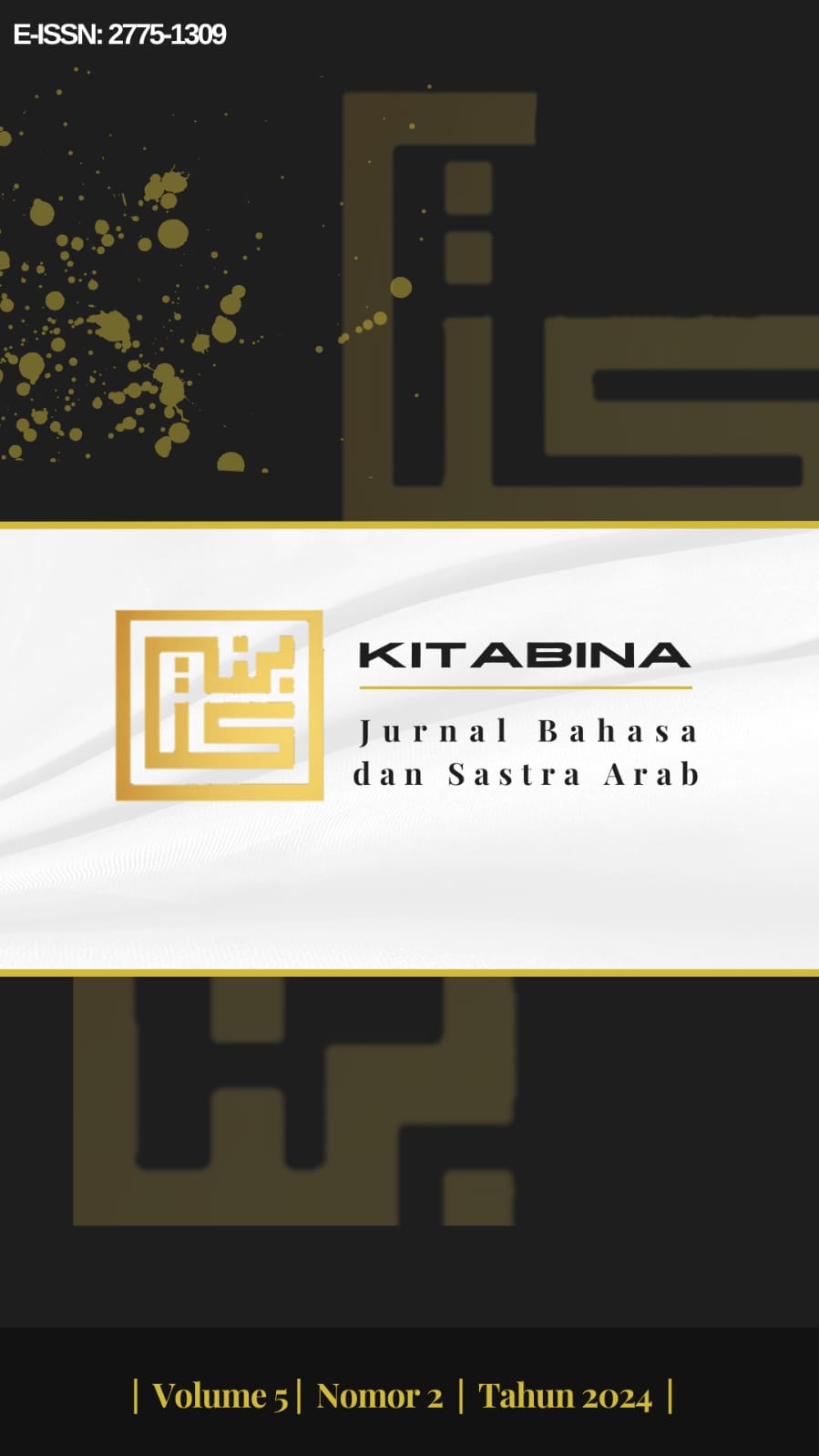DIRECTIVE SPEECH ACTS IN THE FILM THE STORY OF THE CLAIMAN JABIR BIN HAYYAN ON THE AL-ILMU WAN NUR YOUTUBE CHANNEL TINDAK TUTUR DIREKTIF PADA FILM KISAH ULAMA JABIR BIN HAYYAN DALAM CHANEL YOUTUBE AL-ILMU WAN NUR
Main Article Content
Abstract
Research on directive speech acts in the film about the story of the scholar Jabir Bin Hayyan on the YouTube channel Al-Ilmu Wan Nur aims to identify the function of any directive speech acts contained in the film about the story of the scholar Jabir Bin Hayyan on the YouTube channel Al-Ilmu Wan Nur and then classify/ dividing all the functions of these directive speech acts into two types of speech acts, namely types of direct speech acts and types of indirect speech acts. The type of research method used in this study is a qualitative research method. The data collection methods/techniques used in this study were the observing and recording method and followed by documentation. The results obtained from directive speech act research on the story of the cleric Jabir Bin Hayyan in the Al-Ilmu Wan Nur youtube channel are: found six directive speech act functions, including command functions, request functions, question functions, permission granting functions, and advise function. From each function of the directive speech act found in the film about the story of the scholar Jabir Bin Hayyan in the YouTube channel Al-Ilmu Wan Nur, it was found that the function of the directive speech act was classified into the types of direct and indirect speech acts. The dominant type of speech act in the film is direct directive speech act.
Article Details

This work is licensed under a Creative Commons Attribution-ShareAlike 4.0 International License.
Authors who publish with this journal agree to the following terms:
- • Author retain copyright and grant the journal right of first publication with the work simultaneously licensed under Attribution-ShareAlike 4.0 International . that allows others to share the work with an acknowledgement of the work's authorship and initial publication in this journal.
- • Authors are able to enter into separate, additional contractual arrangements for the non-exclusive distribution of the journal's published version of the work (e.g., post it to an institutional repository or publish it in a book), with an acknowledgement of its initial publication in this journal.
- • Authors are permitted and encouraged to post their work online (e.g., in institutional repositories or on their website) prior to and during the submission process, as it can lead to productive exchanges, as well as earlier and greater citation of published work
How to Cite
References
Abdussamad, Zuchri. Metode Penelitian Kualitatif. Edited by Patta Rapanna. Makassar, 2021.
Austin, J. L. How Do to Things with Words. Oxford: The Clarendon Press, 1962.
Bungin, Burhan. Penelitian Kualitatif. Jakarta: Kencana, 2007.
———. Sosiologi Komunikasi. Teori, Paradigma, Dan Diskursus Teknologi Komunikasi Di Masyarakat. Jakarta: Kencana Prenada Media Group, 2006.
Hasan, Muhammad. Metode Penelitian Kualitatif. Makassar: Penerbit Tahta Media Group, 2022. https://eprints.unhasy.ac.id/345/24/1. Buku Chapter_METODE PENELITIAN KUALITATIF.pdf.
Herlina, Rino Febrianno Boer, Nova Saha Fasadena, Adrian Kede, Muhammad Al-Muizul Kahfi, Leila Mona Ganiem, Syntia Sumartini Putri, Nelson Hasibuan, Nur Subchan, and Adzan Desar Deryansyah. Pengantar Ilmu Komunikasi. Pasuruan: CV Basya Media Utama, 2023. https://repos.dianhusada.ac.id/475/1/ILMU KOMUNIKASI REVISE.pdf.
Ilahi, R. Nilai Moral Dalam Novel 3600 Detik Karya Charon: Kajian Pragmatik Sastra. Doctoral Dissertation: Uin Fas Bengkulu, 2021.
Rustono. Pokok-Pokok Pragmatik. Semarang: CV IKIP Semarang., 1999.
Sulaiman, Saat, and Mania Sitti. Pengantar Metodologi Penelitian Panduan Bagi Peneliti Pemula. Edited by Muzakkir. Gowa: Pusaka Almaida, 2020. https://repositori.uin-alauddin.ac.id/17954/1/Pengantar Metodologi Penelitian.pdf.
Yuliarti, Rustono, dan Nuryatin, A. “Tindak Tutur Direktif Dalam Wacana Novel Trilogi Karya Agustinus Wibowo.” Seloka: Jurnal Pendidikan Bahasa Dan Sastra Indonesia 4, no. 2 (2015): 78–85. https://doi.org/10.15294/seloka.v4i2.9864.

